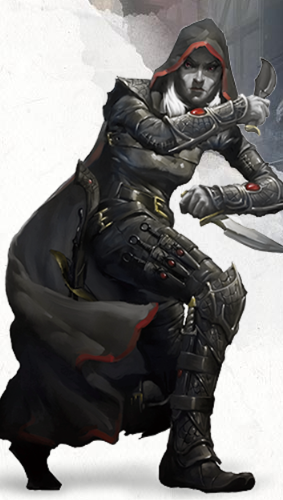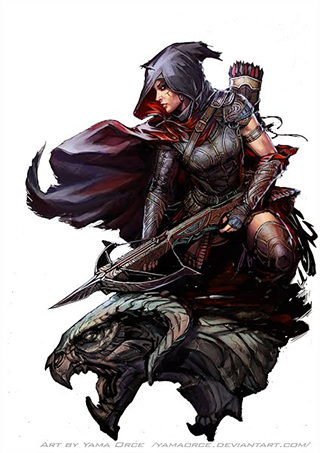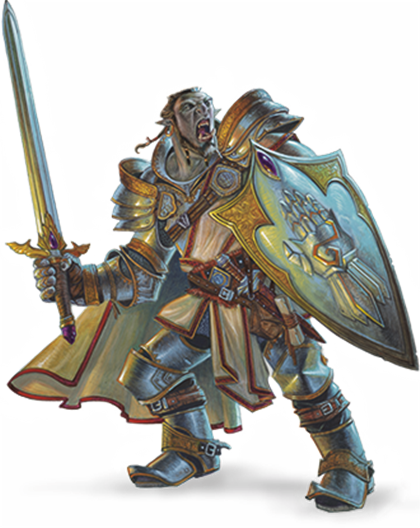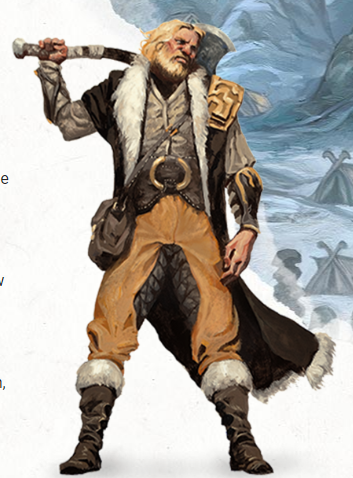Rogue 5e (5th Edition) Class for Dnd Classes
Contents
The rogue 5e is stealthy and dexterous, and in early editions was the only official base class from the Player’s Handbook (Rogue 5th Edition D&D sourcebook) capable of finding and disarming traps and picking locks. The enemies who are inflicting extra damage, surprisingly taken, or caught off-guard will be attacked by Rogue with the new ability called Sneak Attack (in previous editions it is called Backstab).
One of the standard character classes which are playable within D&D (with latest editions Dungeons & Dragons) role-playing game is known as Thief or Rogue. A thief or rogue 5e is commonly known for nimble tricks, sneaky combat capability, and versatile character.
the Rogue is another archetype that comes up in almost every mythology and fantasy story right from the get-go the trickster the infiltrator the liar the scoundrel the thief we love these types of characters and our inner fantasy and you can find them almost anywhere but we’ve got some of our favorites they always use that they always usually fall to be like the second character to the lead
Check also: Dnd Classes
Rogue 5e

You can achieve the below-listed features as a Rogue or Thief (refer to Rogue 5th Edition D&D sourcebook).
Attributes
- Hit Die: d8
- Starting Gold: 4d4 x 10
- Subclass Name: Roguish Archetype
- Suggested Abilities: Dexterity, Intelligence / Charisma
Stroke of Luck
After reaching the 20th level, you will be provided with amazing and surprising skills for your success. Within a range, if the target is missing your attack then it can be turned into a hit. If the Ability Check is failed then your d20 roll can be used as a 20. However, it is not possible to use these kinds of traits until you take a complete long rest.

Elusive
If you are at an 18th level (beginning of the level), the enemies may rarely gain their upper hand since you are so sneaky and unclear. Even if you are knocked out/totally disabled, the attack roll does not have an advantage against you.
Slippery Mind
A greater mental strength will be achieved at the 15th level. You will gain the appropriate skills in Wisdom saving rolls.
Blindsense
After reaching the 14th level, you will have the ability to see or hear any invisible or hidden creatures within 10 feet of distance from you.
Reliable Talent
While you are at the 11th level until they reach perfection, you have the option to redefine your chosen skills. You can add the proficiency bonus by making an ability check (d20 roll will be considered as 9 or 10).
Sneak Attack
You need to know how to make use of your enemies’ distractions & strikes from the 1st level. If you gained with the attack roll (which will be available once per your turn) then you can damage the creature with a hit. You should use a ranged or finesse weapon for an attack (Player’s Handbook – Rogue 5E).
If the targeted enemy is within 5 feet then it is not required to use the Attack roll. Moreover, the enemy will not be incapacitated. As you gain to the next level, the Sneak attack will also increase the extra damage amount on your enemies.
Check also: Paladin 5e class
Equipment
The following pieces of equipment will be granted from your background to start with.
- Thieves tools, two daggers, and Leather armor.
- An explorer pack, a dungeoneer’s pack, and a burglar pack.
- A shortsword, short bow, and quiver of 20 arrows.
- A shortsword or a rapier.
The Rogue 5e Table
| Level | Proficiency | Sneak | Features |
|---|---|---|---|
| Bonus | Attack | ||
| 1st | 2 | 1d6 | Expertise , Sneak Attack , Thieves’ Cant |
| 2nd | 2 | 1d6 | Cunning Action |
| 3rd | 2 | 2d6 | Roguish Archetype |
| 4th | 2 | 2d6 | Ability Score Improvement |
| 5th | 3 | 3d6 | Uncanny Dodge |
| 6th | 3 | 3d6 | Expertise |
| 7th | 3 | 4d6 | Evasion |
| 8th | 3 | 4d6 | Ability Score Improvement |
| 9th | 4 | 5d6 | Roguish Archetype Feature |
| 10th | 4 | 5d6 | Ability Score Improvement |
| 11th | 4 | 6d6 | Reliable Talent |
| 12th | 4 | 6d6 | Ability Score Improvement |
| 13th | 5 | 7d6 | Roguish Archetype Feature |
| 14th | 5 | 7d6 | Blindsense |
| 15th | 5 | 8d6 | Slippery Mind |
| 16th | 5 | 8d6 | Ability Score Improvement |
| 17th | 6 | 9d6 | Roguish Archetype Feature |
| 18th | 6 | 9d6 | Elusive |
| 19th | 6 | 10d6 | Ability Score Improvement |
| 20th | 6 | 10d6 | Stroke of Luck |
Skills and Precision
Rogues are very much skilled in providing broad expertise for matching characters; also use their variety of skills in mastering to perfect their combat abilities. Few rogues will refine their skills to help them in a dungeon environment like Opening locks, disarming traps, finding, and climbing, while others focus on deception and stealth.
During the combat period, rogues will give priority to cunning over extreme strength. They will make a precise attack or stroke, which will hurt the target and make use of barrage to drown the opponents. Few rogues learn the magical tricks to supply their abilities and some have the supernatural skills to avoid danger.
Rogue Creation:
You need to consider the character’s law relationship while creating the Rogue 5e character. Do you have a criminal present or past? Are you on the run from any guild master’s angry thief or against any law? Have you ever left your guild with bigger rewards or bigger risks? Is anything that drives you to ideal, some sort of desire, or adventures?
What was the mode that separates you from your previous life? Did a great con or heist go terribly wrong cause you to reevaluate your career? You might be lucky or gained a few coins from a successful robbery to escape from the squalor of your life.
Check also: Blood Hunter
During your lifetime, you might be separated from your mentor or family and in search of new support. You can easily find another member or a new friend of your adventures, who walkthrough through the options for enhancing your specific talents and a source for your life.
You can follow the suggestions and create a rogue or thief quickly: the Highest Ability score should be Dexterity, select the appropriate Arcane Trickster (archetype) which is used to groom your plan or investigation. Then choose the Charlatan background and Charisma (used to emphasize social interaction and deception).

Check also: Fighter 5e
Proficiencies
- Skills: Roger 5E (fifth edition) allows you to choose any sort of four skills from the following: Stealth, Sleight of Hand, Persuasion, Performance, Perception, Investigation, Intimidation, Insight, Deception, Athletics, and Acrobatics.
- Saving Throws: Intelligence and Dexterity.
- Tools: Thieves’ tools
- Weapons: shortswords, rapiers, longswords, hand crossbows, and Simple weapons.
- Armor: Light armor
Hit Points
- Hit Points at Higher Levels: After the 1st level, your Constitution modifier will be incremented by 5 or 1d8.
- Hit Points at 1st Level: Your Constitution modifier will be incremented by 8.
- Hit Dice: 1d8 per rogue level.
- Expertise – After reaching the 6th level, you can choose one or more skill proficiencies and as well as thieves tool’s proficiency. If you are using the selected proficiencies then for any sort of ability check you will be doubled with your proficiency bonus (refer Rogue 5th Edition D&D sourcebook).
- Improving your Ability Score – After reaching the 4th level (or even again at 8th, 10th, 12th, 14th, 16th, 19th level), you have the ability to increment your Ability score by 1 or 2. However, after reaching the 20th level, you will not be able to use this feature to increment the Ability score. You can also give-up this feature by making use of the Optional feats rule.
Wild Card Suit Table
| Damage die (d4) | Suit | description |
|---|---|---|
| 1 | Blade | First, Roll Sneak Attack damage & add it to razor card’s damage. its next turn when it starts, the target takes additional damage. |
| 2 | Shackle | Until the start of your next turn, the target’s speed is halved. It can’t make more than one attack on its turn while its speed is reduced in this way. |
| 3 | Heart | Roll your Sneak Attack damage and add it to your razor card’s damage. You also immediately regain a number of hit points equal to the half the damage dealt. Any excess hit points regains become temporary hit points. |
| 4 | Wild Ace | This card morphs suits depending on the dealer’s wishes. Choose Blade, Shackle, or Heart. The card then immediately gains the suit’s respective effect. |
| Red | isn’t going to contribute to the effectiveness of your character build at all |
| Sky Blue | is an amazing option. If you do not take this option your character would not be optimized |
| Orange | OK Option |
| Blue | is a great option, you should strongly consider this option for your character |
| Green | Good option |
we’re taking an in-depth look at the rogue class from D&D 5th edition yeah we are going to take a look at everything you need to create your next rogue for your campaign we’ll start with the ability scores races feats as and other build options that will help you prepare your rogue for any situation whether it’s a back-alley brawl a dungeon infiltration or courtly intrigue we’re also going to take a look at pop-culture references from film television comic books and even history to get you inspired about playing your rogue.
we’ve got lots of cool role-playing ideas and tips to help you flesh out your rogue’s background and personality the rogue is the quintessential stealthy scoundrel yeah your character could be a master thief a deadly assassin a graceful Acrobat a tomb robber or any other fantasy archetype from your favorite story or movie no matter the way all rogues believe that the world is theirs for the taking but need to remember that curiosity killed the cat so let’s get rolling why would we want to play a rogue why wouldn’t you want to play a rogue they’re sneaky they’re mean and they can kill things with a lot of crazy moves and abilities they are such a fun and versatile class they have the ability to deal single-target damage with their thanks they’re amazing sneak attack abilities yeah they get more skill proficiencies and tool proficiencies.
that any other class in the game especially with things like expertise and stuff like that exactly your skill bonuses are higher than virtually any other classes yeah right out the gate the other really big advantage.
I think for rogues and especially for new players is that they encourage a lot of creative thinking about situations especially because there’s no resource management in the class whatsoever almost everything in the base class outside of archetypes is useable completely at will so there’s no bookkeeping to worry about you always know that you can use your best abilities whenever you need to although some of them have specific requirements.
situational uses so that makes them really easy to manage but really fun to roleplay exactly which is kind of a killer combination I think that’s probably why there’s such a popular class in addition to the fact. that they embody so many of our favorite archetypes and I think that some of the most well-loved characters in fiction and fantasy are rogues because we love the killer for hire or the scoundrel with a heart of gold yeah so what role does the rogue play in the party I think that there are three different roles that every rogue 5e ends up filling in an adventuring party the first right off the bat is going to be that single target damage dealer yeah they’re no there to clean out an entire room full of enemies but they pick the biggest enemy in the room or the one.
that needs to die the fastest and they say that’s my target and they get to kill in it exactly and depending on your choice of archetype your sneak attack can be anything from a really nice hit to a one-shot kill beyond that every single rogue is an amazing skill specialist that is often depended on by the party to be the scout to disarm traps and they might even be the party face depending on how many social skills your rogue invested yeah but they do have that skill set to be the key infiltrator they’re usually the ones that get sent ahead of the party they’re the ones that have to do all that work which is really fun for role-playing but also very valuable for the party I think the biggest weakness all of the rogue is that oftentimes.
Conclusion
We are sure that the above-mentioned piece of information will help you to understand more about Rogue 5E (fifth edition) Character Class, its roles, and other functionalities.
FAQs
Q1: What Rogue category points can be used in Wild Shape?
- Sneak assault particularly would not work in most instances due to the fact it requires the use of a precise weapon, alternatively, if you modified it into something that ought to conceivably wield a finesse weapon such as an ape, sneak assault would observe below its everyday conditions.
Q2: Is the Alert Feat higher than an Ability Score Improvement for a Rogue?
- The alertness feat in the case of Assassin Rogue is better. The different instructions and classification choices can all be the same. the place as Ability Improvement rankings you can now not educate all through downtime.
Q3: How do you deal with sneak assault if you multi-class in instructions with the sneak attack?
As you can see Rogue is the solely 5e classification that has the sneak assault feature. If this is a 0.33 celebration homebrew, the 0.33 celebration needs to have provided the regulations that are needed to combine the new class.
Q4: What justification ought to there be for a PC mastering thieves’ cant when multiclassing Rogue?
Choose something narrative you like best. Class elements do no longer want narrative justification. The DnD 5E machine is by and large pushed by way of guidelines and abstractions alternatively than narrative. Regardless of the narrative, you use to provide an explanation for how your persona won their type features.


